Classic Fish Cakes
This post may contain affiliate links. See my disclosure policy.
Delightfully crispy on the outside, tender, moist and flaky on the inside, this BEST fish cakes recipe is the perfect way to enjoy fish, even for those who are picky about eating seafood! Paired with my homemade tartar sauce these fish cakes are sure to be a smash hit!
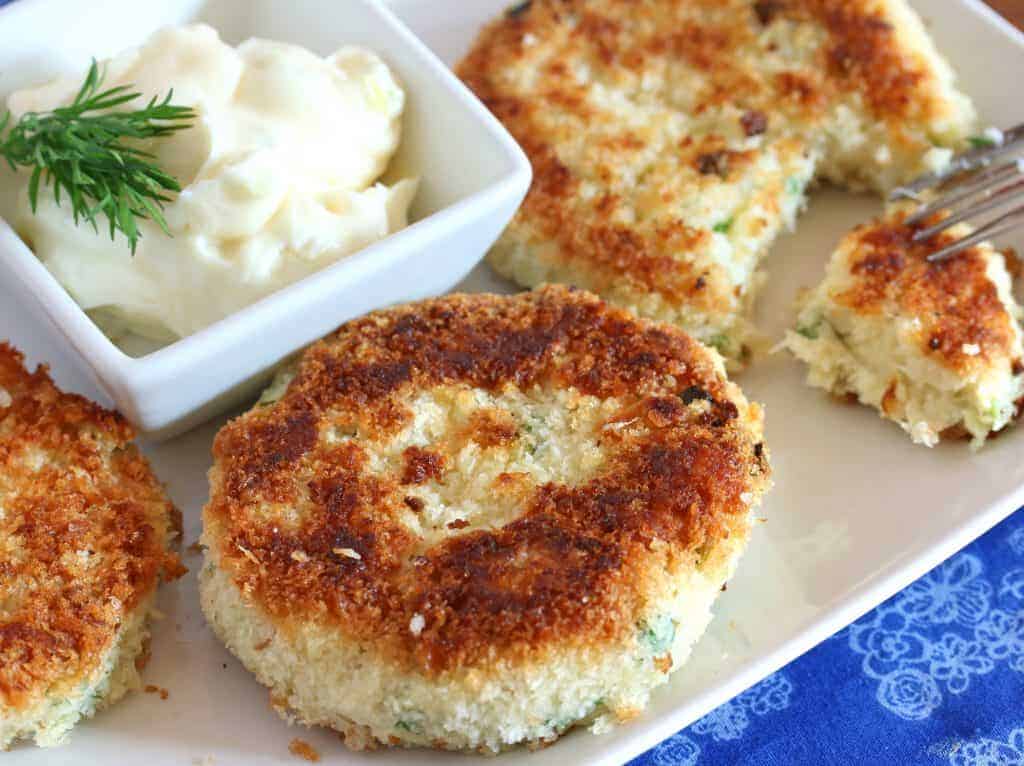
The BEST Homemade Fish Cakes
Fish cakes in various forms are eaten throughout the world and have a long history, dating back to ancient China nearly 4000 years ago. Every country has its own variation but the classic Western ones consists of fish, potatoes, eggs, onions, seasoning, herbs and often breadcrumbs. Through the years they also became a convenient way to use up leftovers. Mrs. Beeton’s 19th century recipe calls for “leftover fish” and “cold potatoes,” a great example of repurposing food. Since those times fish cakes have risen to new horizons, even being served in upscale restaurants with modern twists and gourmet ingredients like smoked salmon and truffles.
These patties are a great way to enjoy fish if you’re generally not crazy about it. The other ingredients help camouflage the flavor, especially if you’re using a mild white fish like cod or haddock, and even the pickiest of eaters may surprise you when you serve these.
Today I’m making some good old-fashioned, classic fish cakes inspired by our excursions up through New England that will have you coming back for seconds, especially when you serve them with our BEST Homemade Tartar Sauce!


BEST Fish Cakes Recipe
Let’s get started!
Place all ingredients, except for the breadcrumbs, in a large bowl and mash until thoroughly combined.
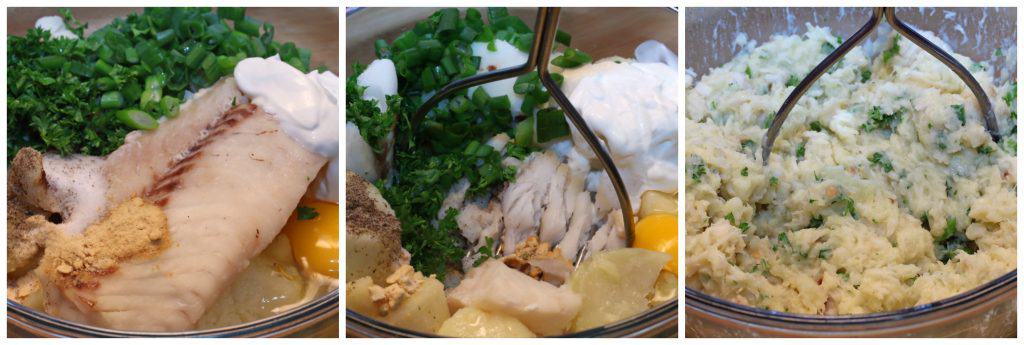
Form the mixture into patties and roll them in the panko breadcrumbs.
Refrigerate the patties for at least 30 minutes or until they’ve firmed up.
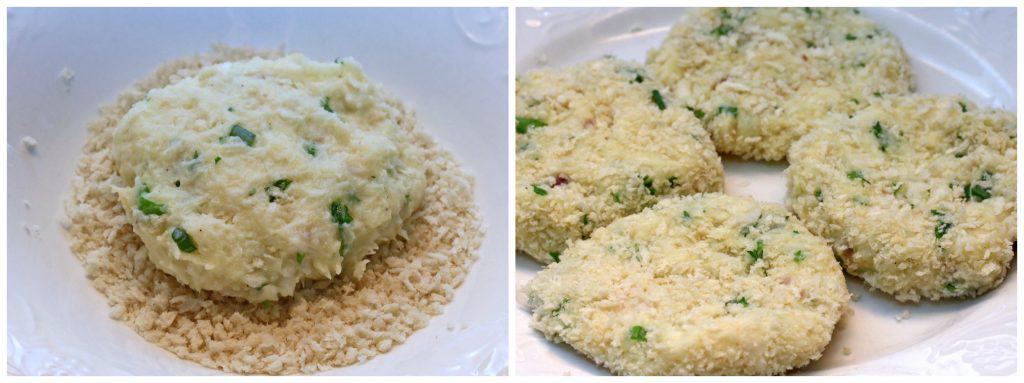
Heat some oil in a non-stick pan and fry the patties on each side for 3-4 minutes until lightly browned, being careful not to overcrowd the pan.
Serve these fish cakes immediately with my BEST Homemade Tartar Sauce.
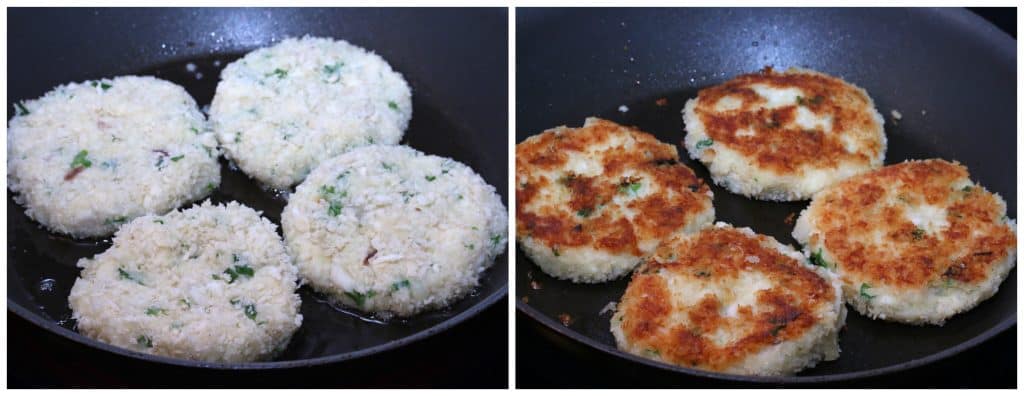
Can Fish Cakes Be Reheated?
Yes. They’re crispiest when they’re straight out of the frying pan but if you have leftover cooked fish cakes you can reheat them in the oven. They can also be microwaved but they’ll be soggier that way.
Can You Freeze Fish Cakes?
Yes, they’re perfect for freezing! Fully assemble the fish cakes, place them in a single layer on a lined baking sheet and freeze them. Once frozen you can put them in a freezer container with greaseproof paper between each layer. To cook them, simply thaw and cook and instructed. You’ll have an easy dinner in a hurry! These will keep for up to 3 months in the freezer.
Enjoy!
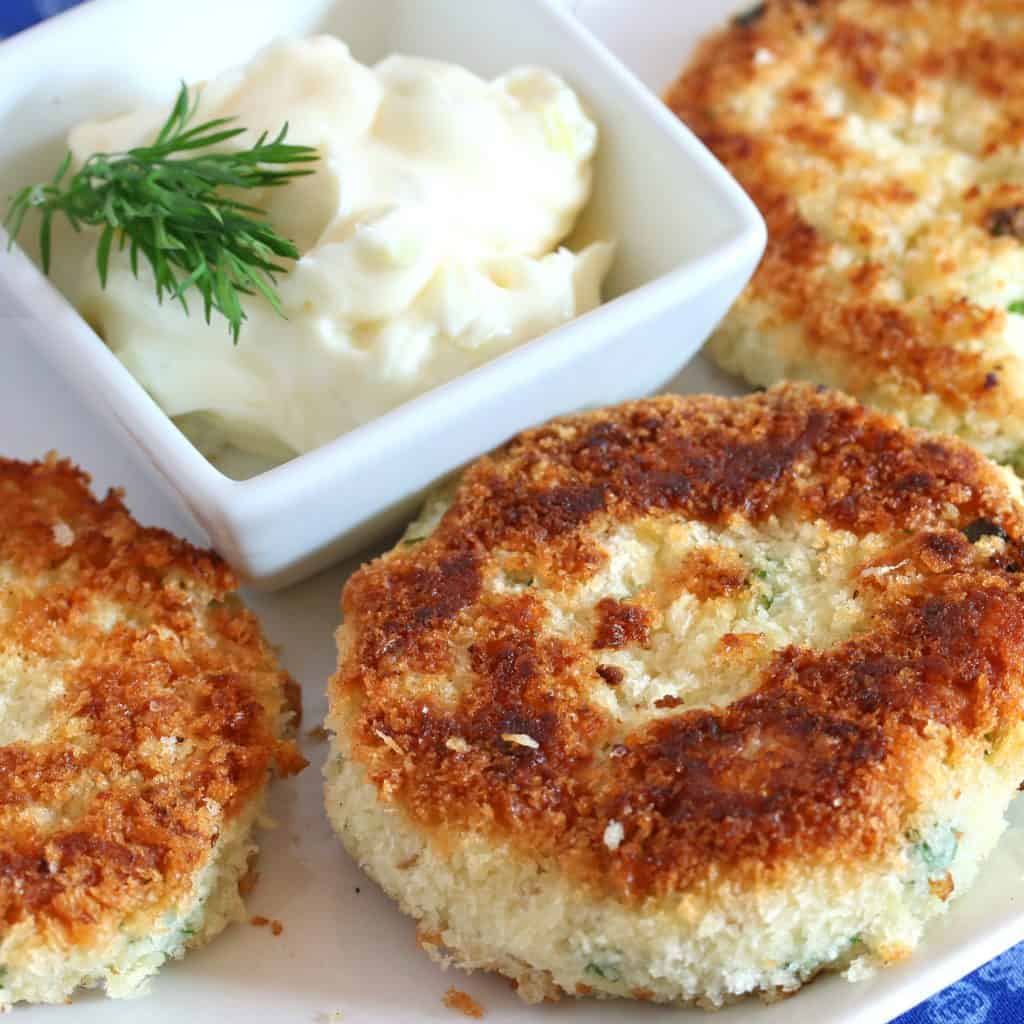
Save This Recipe
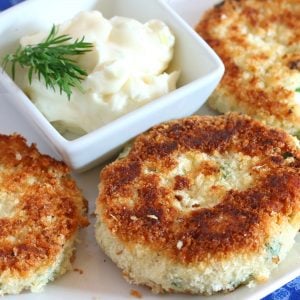
Classic Fish Cakes
Ingredients
- 2 large potatoes (about 2 cups mashed), diced, boiled and drained
- 1 pound white-fleshed fish, COOKED (cod, haddock, pollock, halibut, flounder)
- 1 large egg
- 3 tablespoons sour cream
- 2 tablespoons butter, softened
- 2 green onions, sliced
- 3 tablespoons chopped fresh parsley
- 1 teaspoon sea salt
- 1/4 teaspoon freshly ground black pepper
- 1/2 teaspoon dry ground mustard
- panko breadcrumbs , for coating
- (Gluten-free use GF panko breadcrumbs)
- oil for frying
- Homemade Tartar Sauce
Instructions
- Place all ingredients, except for the breadcrumbs, in a large bowl and mash until thoroughly combined.Form the mixture into 8 equal patties and roll them in the panko breadcrumbs. (You can make smaller patties if you prefer.) Refrigerate the patties for at least 30 minutes or until they've firmed up.
- Heat some oil in a non-stick pan and fry the patties on each side for 3-4 minutes until lightly browned, being careful not to overcrowd the pan.
- Serve immediately with our BEST homemade tartar sauce!
Notes
- To save time, cook the fish and potatoes in advance then mash the ingredients together when you’re ready to make the fish cakes.
Nutrition
Originally published on The Daring Gourmet November 2, 2017



















Terrific flavor, terrific texture, terrific fish cakes!! Will be making these again for sure. Thank you.
I’m so glad you enjoyed them, Bruce, thank you!
Hello Kimberly,Ty for your recipe,I’m a single father and decided to make the effort and make these rather than buying a pack of pre made fish cakes,both my son and daughter absolutely loved them and asked for more ,luckily I made 2 batches,1 to cook and eat ,the other for freezing,,as you can imagine none made it to the freezer,thank you so much for recipe,which turns out to be outstanding value and a good top quality fish cake,👍😊
Mike, that just warms my heart! <3 I'm so happy that you and your kids enjoyed these, thank you so much!
Can I freeze these and at which stage?
Hi Liss, yes you can. Fully assemble the fish cakes, place them in a single layer on a lined baking sheet and freeze them. Once frozen you can put them in a freezer container with greaseproof paper between each layer. To cook them, simply thaw and cook and instructed. They’ll keep for up to 3 months in the freezer.
I made these last night for dinner and the crowd (just my husband and myself) went wild! I haven’t heard the yummy sound as much as I did last night, since I watched Young Frankenstein. They really are perfect and I will be making them again and again.
Lol, that’s wonderful, Kari, thank you! And I had to laugh out loud at your reference to the film, it’s one our favorites! :)
I’m a total crabcake lover, but I was excited to try these because it’s so much more budget-friendly to use fish. I LOVED the flavor and they came out perfect! I used a jar of store-bought tartar sauce this time, but I really want to try your homemade recipe. I’m sure it’s so much better. Thanks for sharing!
Thank you so much, Kim, I’m thrilled that you enjoyed these! :) And I agree, they’re WAY more budget-friendly!
Classic Fish Cakes
My husband loves fish cakes. Years ago I made sure we always had some in the house in the freezer ready. However, you can’t find them anywhere today. So today is our 61stwedding anniversary and I wanted to surprise him by making fish cakes. I found your recipe. I bought all the ingredients and I made them yesterday. Now they are really delicious. My problem is they would not hold together some did;most didn’t. What did I do wrong ?I kind of blew the surprise. I need your help/advice. The tartar sauce did come out perfectly. It had been so long I had forgotten he only eats his fish cakes with ketchup. However he did promise to try the tartar sauce he said it was good.
Hi Connie, I’m sorry these didn’t fully cooperate. Did you make sure to chill them in the refrigerator for at least 30 minutes before frying them? That firms them up. And did you fry them right after you removed them from the refrigerator while they were still cold and firm? Also, it’s important not to try and turn them to soon when frying them or they’ll fall apart.
I made your tartar sauce yesterday & left in the fridge overnight….also I defrosted fish ( spotted mackerel) that we had caught while sailing North….we live aboard our boat & are in far North Queensland….so I made the fish cakes today, followed your recipe to a T…..they did not disappoint…..absolutely delicious 😋 the tartar sauce was also great…we are always fishing & it will go perfectly with any fish……or chips !
That’s wonderful, Karen, I’m so happy you made the fish cakes and tartar sauce and even happier that you enjoyed them both – thank you!
If no potatoes, what should one do, in making fish cake?
Hi Harold, you need potatoes for these.
If you want to bake these what temperature would I use and how long should they bake? Can they be baked, frozen and then reheated?
Thanks
Hi Robin, I’d set the temp to 375 and aim for about 18-20 minutes and until they’re lightly browned. And yes, they can be baked, frozen, and reheated. I recommend reheating them in the oven so they get some of their crispiness back.
Hi. Can one use regular bread crumbs…not panko? Thank you!
Yes you can, Dee!
These look like the exact recipe I’m craving! Is it possible to freeze these before, or after, cooking? Thanks!
Hi Catherine! Yes you can: freeze the uncooked fish cakes by placing them on a lined baking sheet and freeze until solid, then transfer them to a freezer bag or container. They’ll keep for up to 3 months. When you’re ready to use them, thaw them in the fridge overnight and then proceed with cooking as instructed. Happy cooking! :)
these are great, will turn a non fish eater into one, I pan fry them in bacon fat.
Fantastic, Justin, thank you so much! And bacon fat makes pretty much anything better! :)
These fish cakes are great. I used left-over baked haddock and I will plan to make extra for another time so that I can make these cakes. I did successfully halve the recipe. I added a little lemon pepper for an extra zing but I do love this recipe as it is! Thank you so much for it.
Fantastic, Ellie, thank you so much!
Hi, I just made this recipe for my annual Christmas Eve Dinner. It was delicious. I will definitely be making this recipe again. Thank you so much for sharing.
I’m so glad it was a hit, Andrea, thank you!
Just made these fish cakes and the homemade tartar sauce. My husband wanted to drink the leftover sauce – so good! I’ll be making extra fish everytime now just to have leftovers for this recipe!
Wonderful, Nicole, I’m so happy to hear that, thank you! :)
Hi Kimberly, I love fish cakes but have never made them. I plan to try out your recipe. Some questions:
1. When you say cook the fish ahead of time, how should I cook them?
2. Can I used canned Albacore tuna?
3. How can I ensure the patties don’t fall apart?
Thank you for your help.
Jay
Hi Jay, you can either bake or fry the fish (some readers have even microwaved it) ahead of time. I don’t recommend canned tuna. The mashed potatoes and egg in the ingredients will help keep the patties together. Happy cooking! :)
Thank you Kimberly! I’ll try it out and let you know. Jay